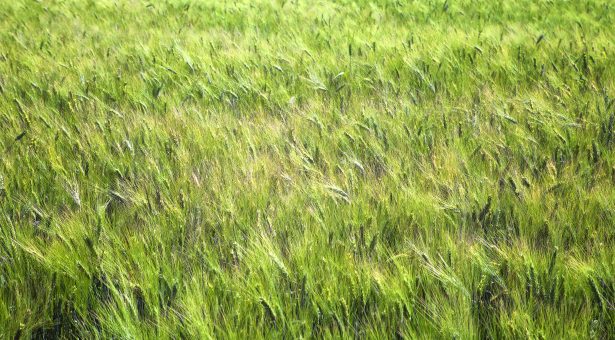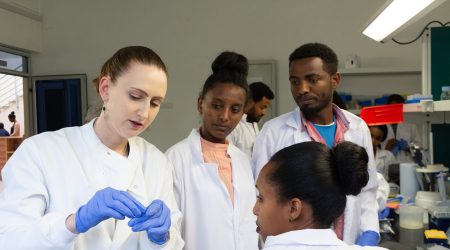Dissecting the genomes of crop plants to improve breeding potential

Scientists on the Norwich Research Park, working with colleagues in China, have developed new techniques that will aid the application of genomics to breeding the improved varieties of crop needed to ensure food security in the future.
By dissecting the complicated genome of oilseed rape they have been able to produce maps of the genome that are needed for predictive breeding.
Traditional breeding involves crossing two varieties and selecting the best performing among the progeny. Predictive breeding is a more advanced technique where specific parts of the genome most likely to contain beneficial genes are identified.
Genomic sequencing and the availability of genetic linkage maps can play a major part in predictive breeding efforts by linking beneficial traits to specific parts of the genome.
Researchers and breeders use genetic markers to construct linkage maps, which help to identify useful genes. They are also vital to marker-assisted crop breeding, where the maps and markers can greatly accelerate the breeding in of new improved traits.
However, for key crops such as bread wheat and oilseed rape, the use of this kind of genomics-based predictive crop breeding is severely hampered due to the complicated genomes that these species possess.
Many important crop plants are polyploid, possessing several sets of chromosomes. Bread wheat, for example, contains three pairs of chromosomes derived from multiple hybridisation events that occurred between two other wheat species relatively recently in its ancestry.
To try to overcome this problem, a team from the John Innes Centre and The Genome Analysis Centre (TGAC), which are strategically supported by the BBSRC, combined sequence data from different sources to construct genetic linkage maps.
The team led by Professor Ian Bancroft worked on oilseed rape, which as well as being an important oil crop also plays a key role in crop rotation strategies. Its oil has industrial applications and its straw can be used for biofuel production.
Like bread wheat, oilseed rape (Brassica napus) has a complicated genome, having recently been formed from related species Brassica rapa and Brassica oleracea.
The strategy adopted by the group involves integrating the available sequence data for oilseed rape with that of its ancestral progenitors, and also that of a more distantly-related species for which high-quality genome sequence data is available, in this case the model plant Arabidopsis thaliana.
Instead of trying to sequence the DNA, the team focussed on the RNA transcribed from the DNA when the genetic code is expressed. The complete set of all of this transcribed RNA is known as the transcriptome.
TGAC used the Illumina GAII platform for the study, producing a series of consistently high quality sequence datasets from expressed genes.
The team analysed the transcriptome in juvenile leaves, which gives an overview of all of the genes that are expressed in that tissue.
Using the sequence variation the researchers were able to construct genetic linkage maps in oilseed rape, eventually identifying over 23,000 markers. This allowed them to align the oilseed rape genome with that of Arabidopsis thaliana and also to sequence data from oilseed rape’s two progenitor species.
This method of dissecting the genome of polyploid crops is likely to be equally applicable to other important crops. Bread wheat is a prime candidate for this, using the model grass Brachypodium distachyon in the place of Arabidopsis.
“Dissecting the genome of oilseed rape like this opens up the possibility of using predictive breeding techniques that will really help with the production of improved varieties” said Professor Bancroft.
This study was published in Nature Biotechnology and funded by the BBSRC, the Department for Environment, Food and Rural Affairs and the China National Basic Research and Development Program.



